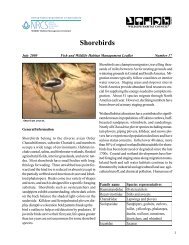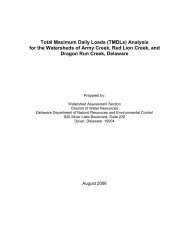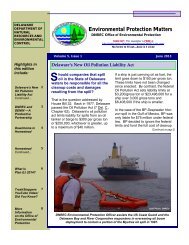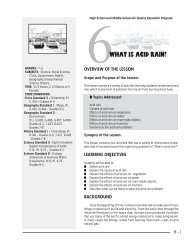South Wilmington Socioeconomic Profile - Delaware Department of ...
South Wilmington Socioeconomic Profile - Delaware Department of ...
South Wilmington Socioeconomic Profile - Delaware Department of ...
- No tags were found...
You also want an ePaper? Increase the reach of your titles
YUMPU automatically turns print PDFs into web optimized ePapers that Google loves.
Employment by industryThis section <strong>of</strong> the chapter presents information on employment in 16 industry classifications forthe residents <strong>of</strong> <strong>South</strong> <strong>Wilmington</strong>, the City <strong>of</strong> <strong>Wilmington</strong>, and New Castle County. The term“industry” refers to the kind <strong>of</strong> business conducted by a person’s employing organization; industry isnot the same thing as occupation, which refers to the actual type <strong>of</strong> work that a person does on thejob.In <strong>South</strong> <strong>Wilmington</strong>, the top three employment industries were health and social services (16.1percent); finance, insurance, and real estate (15.2 percent); and wholesale and retail trade (14.7percent); these three industries alone employed nearly half <strong>of</strong> all working <strong>South</strong> <strong>Wilmington</strong>residents (see Figure 4.6. and Table 4.2.).By comparison, in the City <strong>of</strong> <strong>Wilmington</strong> and New Castle County, the industry that employed thelargest percentage <strong>of</strong> the working population was the finance, insurance, and real estate industry;however, overall a larger percentage <strong>of</strong> <strong>South</strong> <strong>Wilmington</strong> residents were employed in the finance,insurance, and real estate industry. The second most common employment industry in the City <strong>of</strong><strong>Wilmington</strong> was health and social services and, in New Castle County, manufacturing rankedsecond. Similar to <strong>South</strong> <strong>Wilmington</strong>, in both the City <strong>of</strong> <strong>Wilmington</strong> and New Castle County, theagriculture and mining and management industries employed the smallest percentages <strong>of</strong> thepopulations.The distribution <strong>of</strong> <strong>South</strong> <strong>Wilmington</strong> male and female employees in the various industries differed.The majority <strong>of</strong> <strong>South</strong> <strong>Wilmington</strong> men worked in the wholesale and retail trade industry, followedby nearly equal percentages <strong>of</strong> men in the construction; manufacturing; transportation, warehousing,and utilities; and finance, insurance, and real estate industries (Figure 4.7.)—these five industriesemployed two-thirds <strong>of</strong> all <strong>South</strong> <strong>Wilmington</strong> men. In contrast, nearly one-quarter <strong>of</strong> <strong>South</strong><strong>Wilmington</strong> women worked in the health and social services industry, followed by the finance,insurance, and real estate; trade; and government sectors—these four industries employed over twothirds<strong>of</strong> all <strong>South</strong> <strong>Wilmington</strong> women.62<strong>South</strong> <strong>Wilmington</strong> <strong>Socioeconomic</strong> <strong>Pr<strong>of</strong>ile</strong>
















